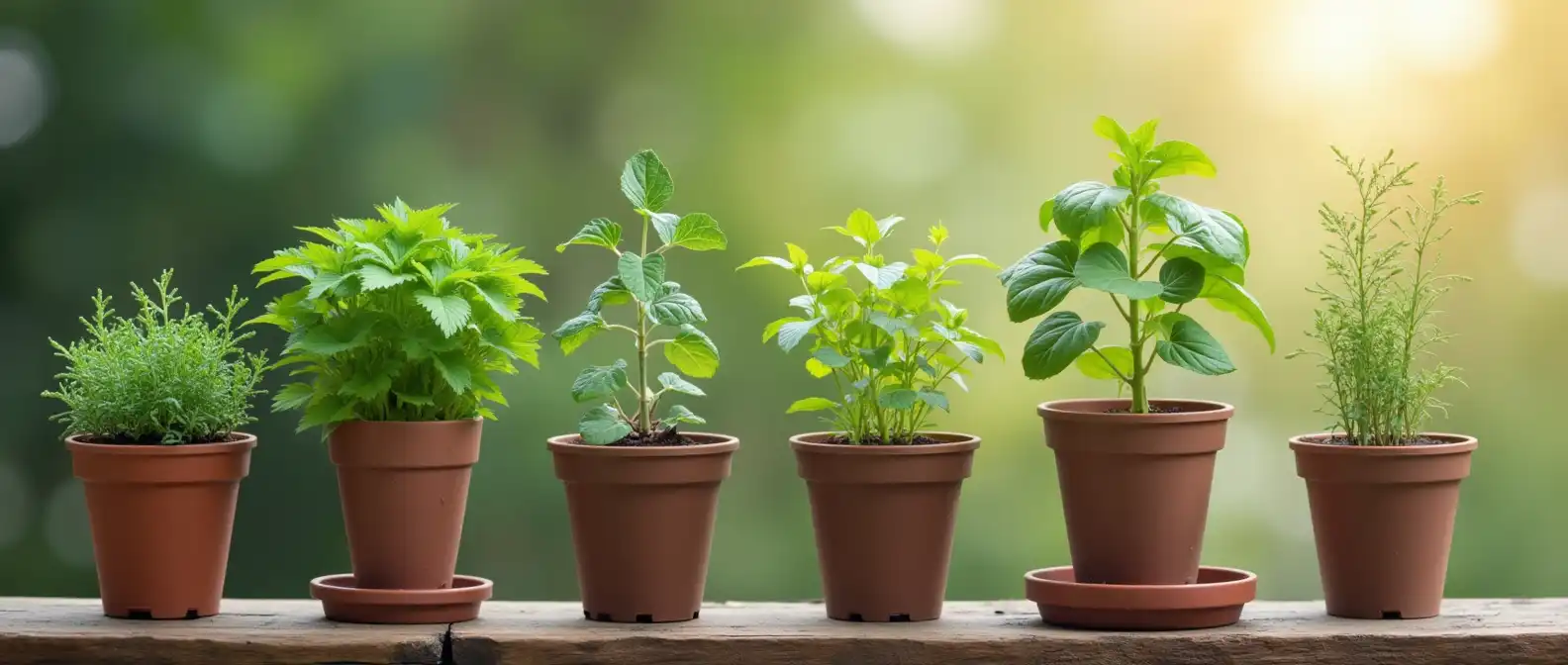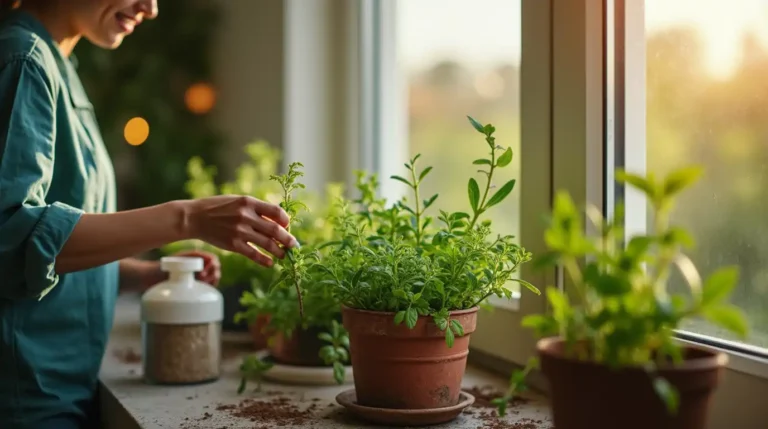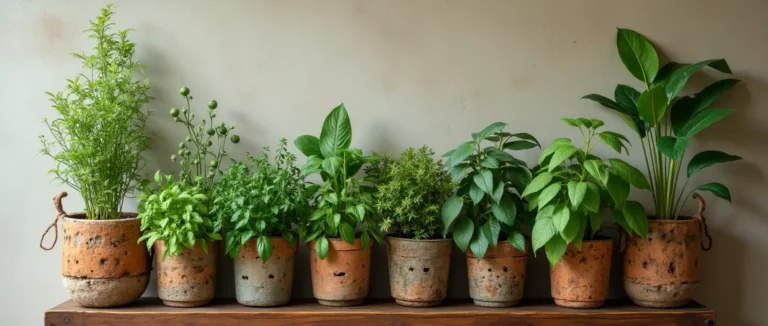How to Maximize Sunlight for Your Balcony Herb Garden
Introduction
Table of Contents
ToggleMaximizing sunlight for herbs is essential for their growth and flavor. Sunlight is the lifeblood of any garden, and for herbs, it’s especially crucial. Herbs are sunlight-hungry plants, thriving with exposure to bright, direct light. For balcony gardeners, getting sunlight right can be the key to unlocking a bountiful, flavorful herb garden. Whether you’re growing basil for your pasta or mint for a refreshing tea, the right amount of sun ensures vibrant growth and rich flavors. Maximizing sunlight for herbs on your balcony is not only about positioning your plants in sunny spots; it’s about understanding your space, your plants’ needs, and utilizing clever strategies to give your herbs the best chance to flourish.
Understanding Sunlight Needs for Herbs
Herbs’ Varied Sunlight Requirements
Herbs, like all plants, have different light needs. Some thrive under the midday sun, while others prefer softer, filtered light. Understanding how different herbs respond to light is key to maximizing sunlight for herbs. For instance, basil and rosemary require direct sunlight to develop their distinctive flavors, while herbs like mint and parsley can tolerate partial shade, which is ideal for maximizing sunlight for herbs in shadier areas. Knowing these varying light requirements is crucial for maximizing sunlight for herbs on your balcony or in your indoor garden.
Maximizing Sunlight for Herbs
Maximizing sunlight for herbs is essential for their growth. When herbs receive adequate light, it stimulates the production of essential oils and compounds that give herbs like thyme, oregano, and lavender their irresistible fragrance. Maximizing sunlight for herbs encourages healthy, robust growth, ensuring abundant, flavorful harvests. As a gardener, it’s crucial to understand how to maximize sunlight for herbs in order to provide the best conditions for their development. It’s not just about providing more light, but also about understanding where and when to optimize this light to get the best from each plant.
Assessing Your Balcony’s Sunlight Exposure
Evaluating Sunlight Patterns Throughout the Day
To maximize sunlight for herbs, start by evaluating how much light your balcony gets throughout the day. The orientation of your balcony, whether it faces north, south, east, or west, will greatly influence the amount of direct sunlight it receives. For example, a south-facing balcony will get the most direct sunlight, which is perfect for maximizing sunlight for sun-loving herbs like oregano and thyme. By knowing your balcony’s orientation, you can adjust the arrangement of your plants to maximize sunlight for herbs that are more light-hungry, while optimizing exposure for others that require less light.
Tracking Sun and Shade Patterns
Tracking the sun and shade patterns on your balcony is an effective way to maximize sunlight for herbs. It’s important to walk around your balcony at different times of the day to see where the light falls and for how long. This will help you understand which areas receive direct sunlight and which are partially shaded or completely shaded. Once you identify these areas, you can organize your plants to maximize sunlight for herbs according to their specific needs. For added precision, using a light meter can help measure the intensity of light received and adjust the placement of your plants accordingly.
Strategic Placement of Your Planters
Choosing the Best Locations for Sunlight Exposure
The placement of your planters is crucial to maximize sunlight for herbs. For herbs like basil and oregano that need several hours of direct sunlight, it’s important to place them in the sunniest corners of your balcony. A good strategy is to group your herbs based on their light needs. For instance, place sun-loving plants in one sunny section and shade-tolerant plants in another. By carefully planning the placement of your planters, you can maximize sunlight for herbs and give each plant the best conditions for thriving.
Elevating Your Planters for Better Sun Exposure
Another effective technique to maximize sunlight for herbs is elevating your planters. This allows light to reach your plants from different angles, increasing their exposure to the sun. This method is especially useful if you have a small balcony, as it enables you to maximize sunlight for herbs while saving space. By elevating your planters, you give your plants better access to light, promoting growth and health. Using plant stands or stacking pots can be a great solution to maximize sunlight for herbs in a limited space.
Optimizing Planter Design for Sunlight Maximization
Choosing the Right Planter Materials
The design of your planters also plays an important role in maximizing sunlight for herbs. Choosing deep planters allows the roots to develop further, giving the plants more access to the nutrients they need for growth. Additionally, certain materials, like ceramic and clay, absorb heat and help keep the soil temperature stable. This extra heat, combined with good exposure to sunlight, can help maximize sunlight for herbs while regulating temperature and humidity. Therefore, choosing the right planter materials is crucial for ensuring that your herbs receive both the light and heat they need.
Using Reflective Surfaces for Sunlight Maximization
Using reflective surfaces is a simple yet effective technique to maximize sunlight for herbs. Items like mirrors or white-painted walls can reflect sunlight and direct it toward your plants, even in the shadier parts of your balcony. This helps increase the amount of light that reaches your plants without adding new light sources. Maximizing sunlight for herbs with reflective surfaces is particularly useful in corners where access to direct light is limited. This small adjustment can transform the lighting in your garden and maximize the effectiveness of the light your plants receive.
Using Vertical Gardening to Capture More Sun
Vertical Planters for Limited Spaces
Vertical gardening is a perfect solution for maximizing sunlight for herbs when space is limited. By installing vertical planters on your balcony walls or railings, you can expose your herbs to the sun while saving floor space. This allows you to maximize sunlight for herbs in smaller areas by using height rather than floor space. Vertical gardening not only helps maximize sunlight for herbs but also optimizes the space available on your balcony.
Strategic Placement of Vertical Planters
To maximize sunlight for herbs, place vertical planters in areas where the sun will reach them from morning until afternoon. This ensures that your plants get the maximum amount of sunlight throughout the day, which maximizes sunlight for herbs and enhances the production of essential oils and flavors. Strategically placing vertical planters allows for optimal light exposure throughout the day, boosting the vitality and growth of your plants.
Utilizing Adjustable Planters and Shelves
Benefits of Repositioning Your Planters
Maximizing sunlight for herbs becomes much easier when you can reposition your planters throughout the day. Using adjustable planters allows you to move your plants to maximize sunlight at different times. This is especially useful for herbs that need several hours of direct sunlight each day. By moving your plants according to the sun’s path, you ensure optimal exposure to light, maximizing growth and health for your herbs.
Using Mobile Shelves for Flexibility
Mobile shelves are a great way to maximize sunlight for herbs. These shelves can be easily moved throughout the day, allowing you to follow the sun’s path and ensure your herbs get the best sunlight possible. Maximizing sunlight for herbs becomes more flexible when you have the ability to move your plants to capture more direct light.
Shading and Protection Techniques
Creating Shaded Areas for Delicate Herbs
While maximizing sunlight for herbs is crucial, some delicate plants, like mint and parsley, can suffer from sunburn. For these herbs, it’s important to create shaded areas while maximizing sunlight for the other herbs. Using trellises, nets, or even voile curtains to filter the light can provide a more suitable environment for these plants while still maximizing sunlight for the others. Finding a balance between protection and exposure is key to maximizing sunlight for all your herbs.
Using Protective Covers to Control Sun Exposure
Protective covers, like umbrellas or retractable awnings, can help control sun exposure. Maximizing sunlight for herbs while offering shade to sensitive plants is important to avoid damage from excessive sun. These techniques allow you to maintain a balance between maximizing sunlight for herbs while protecting those that cannot tolerate too much direct sunlight.
Time of Day and Sun Exposure Considerations
Morning vs. Afternoon Sun Exposure
The time of day is critical for maximizing sunlight for herbs. Morning light is gentler, while afternoon light is more intense. It’s important to place herbs that prefer softer light in areas where they’ll receive morning sun, while those that can tolerate longer exposure should be placed in areas that get more afternoon light. Maximizing sunlight for herbs requires adjusting the placement of your plants based on the intensity of the light.
Adjusting for Seasonal Changes
As the seasons change, the angle of the sun shifts, which can affect how much light your herbs receive. Maximizing sunlight for herbs requires adjusting the placement of your planters regularly to ensure that your plants get enough light throughout the year. Maximizing sunlight for herbs in winter, for example, may require moving plants closer to windows to capture the weaker sunlight.
Maximizing Sunlight with Reflective Surfaces
Enhancing Sunlight Exposure with Mirrors
Reflective surfaces, like mirrors and white walls, are great for maximizing sunlight for herbs in shaded areas. These surfaces reflect light toward your plants, which is particularly useful for maximizing sunlight for herbs in shadier spots on your balcony. Maximizing sunlight for herbs with mirrors or reflective surfaces can multiply the light hitting your plants without adding new light sources.
Using White Walls for Reflection
White-painted walls are an excellent way to maximize sunlight for herbs in shadier areas. White paint reflects sunlight, directing it back to your plants. Maximizing sunlight for herbs in these conditions can increase the light intensity while optimizing the available space.
Common Mistakes to Avoid When Managing Sunlight
Overexposing Your Herbs to Sunlight
A common mistake is maximizing sunlight for herbs by exposing them to too much direct sunlight. While some herbs need a lot of light, excessive exposure can harm them. Maximizing sunlight for herbs requires finding the right balance between direct light and shade to prevent sunburn.
Neglecting Seasonal Changes
It’s also common to neglect the impact of seasonal changes on sunlight exposure. What works in spring or summer may not be effective in fall or winter. Maximizing sunlight for herbs requires being mindful of the sun’s angle and adjusting the placement of your plants according to the seasons.
Conclusion
Maximizing sunlight is crucial for a healthy, productive balcony herb garden. By understanding your herbs’ needs, evaluating your balcony’s sunlight, and using clever techniques like vertical gardening and reflective surfaces, you can create the perfect environment for your herbs to thrive. Don’t forget to experiment with different placements and strategies to see what works best for your specific space. With a little patience and creativity, you’ll enjoy a flourishing herb garden year-round, maximizing sunlight for herbs and unlocking their full potential.
For more tips on balcony gardening and maximizing sunlight for your plants,visit this link






